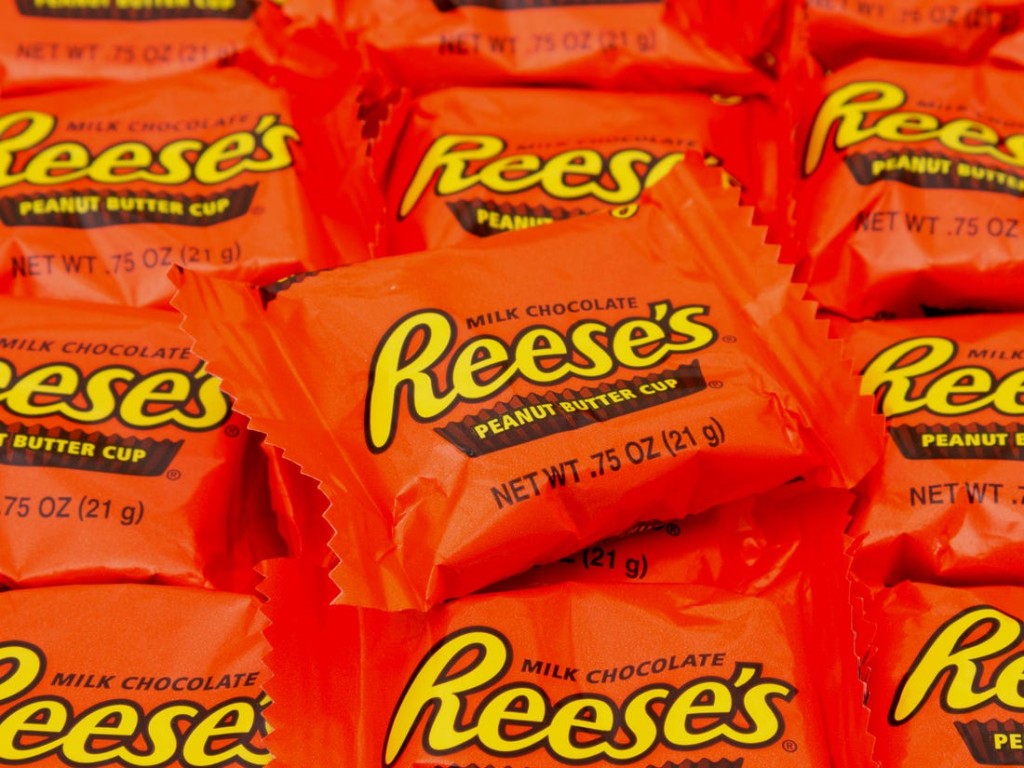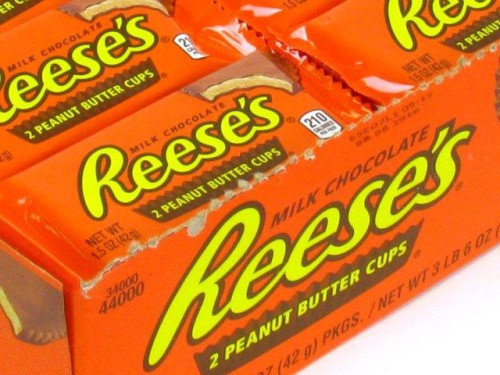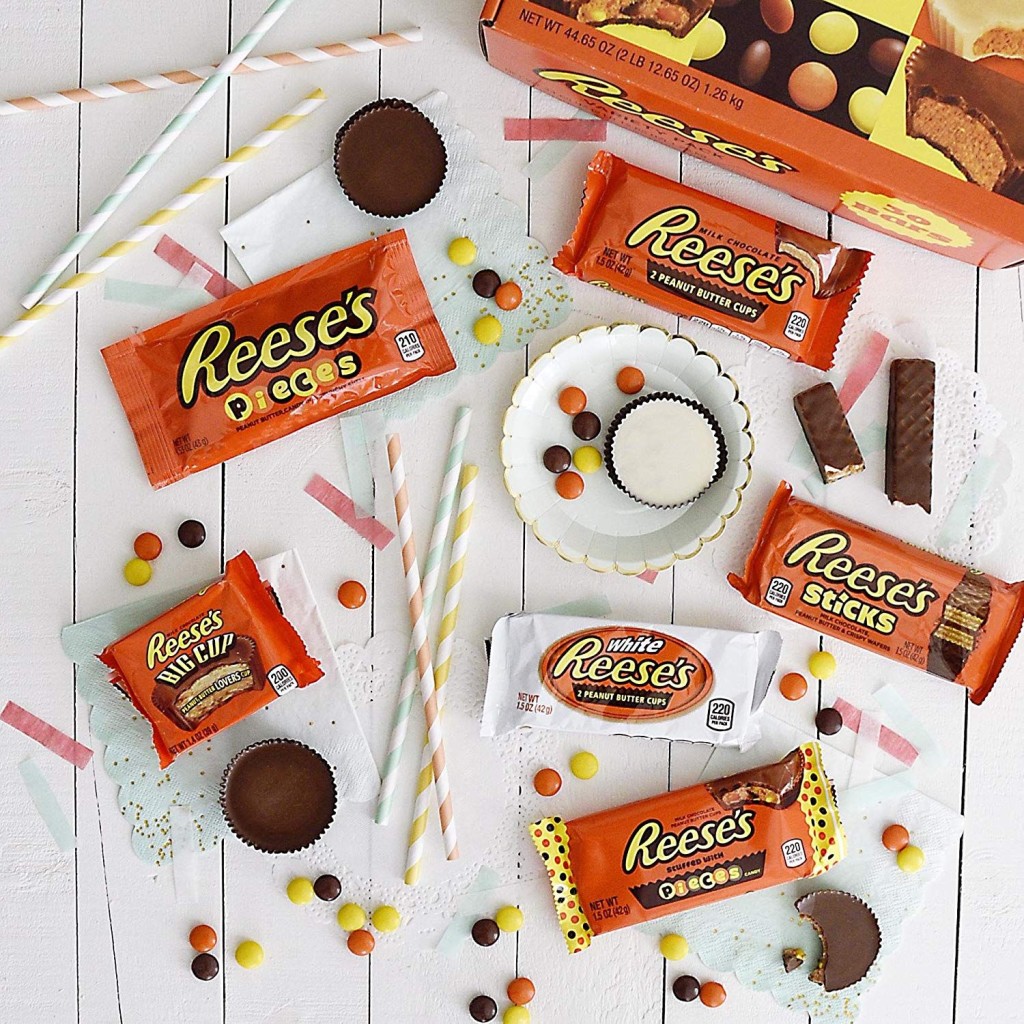I’m about to get weird. But it’s Halloween and on Halloween you’re allowed to get weird. You see, Halloween is responsible for my most brutal craving, a craving that has followed me deep into my adult life – that of the Reeses Peanut Butter cup. Due to those single little orange squares of demonary, I have a lifetime addiction I’m battling.
But anyone who knows Reeses Peanut Butter Cups knows that there’s a big difference between a good Reeses Peanut Butter Cup and a bad one. A good Reeses Peanut Butter Cup has a shiny crisp hard layer of chocolate on the outside, and a mushy delicious peanut butter filling on the inside. Unfortunately, the delicious versions of this perfect feat of finger-licking engineering can only be found sporadically. They’re like rare pokemen.
You’re far more likely to receive the bad version of the Reeses Peanut Butter Cup. These will have no shine on the chocolate, but rather a muddy grayish-brown texture with softened edges. This is due to the cup melting, un-melting, melting, and un-melting over time. And don’t even get me started on the inside, which is hard and chalky. Opening a Reeses package and finding these cups is one of life’s greatest disappointments.
So what is a Reeses Peanut Butter lover to do? Well, I’ve found a trick, a crack in the system, which allows one to determine if the package is that fresh delicious ideal version of the cup or its sad muddy depressing cousin.
Now pay attention.
On the back of every package is a date. That is the “best by” date. Now you’re going to need a degree in Dynamical systems and differential equations to understand the next step. So if calculus eluded you, turn away now. I can’t help you. The “best by” date on the back of the package must be 7 months or more ahead of the current date in which you are residing. That difference in dates denotes a brand new Reeses Peanut Butter cup. You can take your chances with six months or five months. But I wouldn’t. It’s too risky. Only that seven months or beyond date is confirmation that you have a great Reeses Peanut Butter Cup on your hands, which you will be able to buy with complete confidence that your impending meal will be a great one.
You’re welcome.
Reeses Peanut Butter Cups are doing double-duty today as they’ve also inspired this article. We’re going to play a little Trick or Treat with the best horror movies of the decade. I combed through the most financially and critically successful horror films of the last ten years and looked for examples of what to do (treat) and not to do (trick). Let’s take a look.
A Quiet Place
Treat: A high concept horror hook is gold. But one that allows you to explore horror in a completely new way is platinum. The concept of not being able to make a sound or you’re dead within seconds may be the most clever idea of the decade. It allows for a silent horror film, something that audiences had not seen for decades. Which is why the film made 180 million dollars on a 17 million dollar budget.
Trick: You have to iron out the holes in your concept. If you don’t, you’re going to lose some of your audience. The reason so many people came out of A Quiet Place angry is because they’d didn’t buy into the concept (what happens if you sneeze or fall? And why don’t they all live by the waterfall, which drowns out sound?). It’s up to the writer to eliminate all those wrinkles so nobody’s disbelief is suspended.
Get Out
Treat: Get Out began the social commentary horror genre. I expect this trend to be around for at least another five years, so take advantage of it. It’s a volatile ground (poor “The Hunt” found this out the hard way). But one thing is for sure – these scripts are rising to the top of producer’s must-read lists. Social Commentary + Horror is a goldmine!
Trick: There ain’t much wrong with Get Out so I’ll give you a couple of small tricks. Do NOT denote something weird going on with a character by having their nose inadvertently bleed. That has been done in 7032 horror movies to date. And don’t, when your characters are driving somewhere, have them hit, or almost hit, a deer. This scene is so common in the horror scripts I read, the only question I have is what page it will occur on.
It Follows
Treat: As was the case with A Quiet Place, simple concepts with few rules work well in horror. A person only you can see follows you, trying to kill you, until you pass the curse on to the next person by sleeping with them. Heck, the whole concept is right there in the title. Nice!
Trick: Don’t break the rules you’ve set up, no matter how difficult that makes the writing or how much it improves your set pieces. Courtesy of Tarantino, he points out that throughout this whole movie, these things had one M.O.: come at you and try to kill you. Yet in the finale, which occurs in a pool, they’re throwing things at their target? Strategizing? That’s never happened before. Stay consistent! Or if you’re going to change the rules, make sure you’ve properly set the changes up earlier in the story.
Hereditary
Treat: There’s no more important genre than horror where you must make it clear to the audience that THEY’RE NOT SAFE. If an audience feels safe during a horror movie, YOU’VE FAILED. So give them one horrible incident in the first 45 pages of your script that they never saw coming in a million years. Nobody would ever expect the writer to kill off the mentally challenged daughter in the family because it’s never been done before! So Ari Hester does just that… in the most horrifying way possible. Is there a single audience member who has any idea what to expect after that scene? No. Moving forward, nothing is sacred, nothing is safe. And that’s right where you want your audience.
Trick: Horror scripts remain some of the sloppiest I read. That’s because writers (especially younger writers) think it’s all about the scares. They don’t care if things make sense. They don’t care about carefully setting a story up, building it throughout the second act, and paying it all off at the end in an intelligent way. As long as they get to include that scene where a character gets operated on in a basement hospital while they’re awake, they’re happy. Hereditary could’ve been great if the narrative weren’t so sloppy.
Let The Right One In
Treat: Horror is the perfect genre for the taboo, the yucky stuff we’re not supposed to talk about in society. It’s the very reason we’re not allowed to talk about it that makes audiences so curious when they see it. Let the Right One In introduces us to a 55 year old man in a relationship with a 12 year-old “girl.” Of course, that’s not exactly what’s going on. And there are more taboo topics revealed as the story unwinds. But if you can think of something that’s icky/disgusting/weird/taboo, it might be the perfect subject matter for a horror script.
Trick: Playing with the following tip is like playing with fire. You’ve been warned. “Imply” instead of “tell” to create a more powerful impact. In the book this film was based on, pedophilia is a primary theme, portrayed through Hakan, the 55 year-old “keeper” and Eli, his child vampire’s, relationship. But in the screenplay, it is never stated that they are with one another, leaving their relationship up to interpretation. The reason this is such a powerful trick is because it allows the reader to feel like they’ve figured it out on their own. That’s always more satisfying than being straight up told. But be careful. If you’re too vague and there’s no implication at all what’s going on, the reader might not catch what you’re selling.
IT
Treat: Every horror script should have at least one set piece scene that revolves around an impending sense of doom that the audience knows the character isn’t going to get out of (they can still get out of it, but the important thing is that the audience believes they won’t). The early scene in “IT” where a young child encounters a curious clown in the sewer is so good it became the poster. Just remember that newbie writers will speed through this scene. Veteran writers know that these precious perfect moments of tension need to be milked for as long as possible. Make them one of your horror script’s long set pieces.
Trick: Choose characters that the antagonist has a significant advantage over. The bigger the gap between the villain’s strength and the heroes’ strength, the better. IT’s success had a lot to do with the main characters being children. Children are helpless against a powerful monster. One of the reasons we didn’t feel nearly as scared in the sequel is because they were now adults. The gap in strength had lessened considerably.
The Conjuring
Treat: Something that works really well in horror films is children’s games turned deadly/scary. I don’t know why. Maybe it’s the contrast between something that’s supposed to be fun being deadly, but a well-constructed child’s game sequence in a horror film can work wonders. It worked so well for The Conjuring that they built the entire first trailer around it. There was also that script that recently sold about kids’ games in a haunted house. Just make sure that you don’t use something common! Find a game or an angle on a game that hasn’t been done before.
Feel free to take another treat from the basket: The power of proper Point of View. Producer Tony DeRosa-Grund wrote a treatment for The Conjuring which he tried to sell for 14 years unsuccessfully. He finally gave the idea over to brothers Chad and Carey Hayes, who changed the narrative’s driving point-of-view from the family who’d moved into the house to the Warrens (the ghost investigators). This change in POV helped contribute to a six studio bidding war. Are the characters in your current script the best point of view for the story? You owe it to yourself to imagine your story with as many other points-of-view as possible before coming to that conclusion.
Look out for razor blades in your candy and don’t stay out too late! Oh, and share your favorite Halloween candy in the comments!





